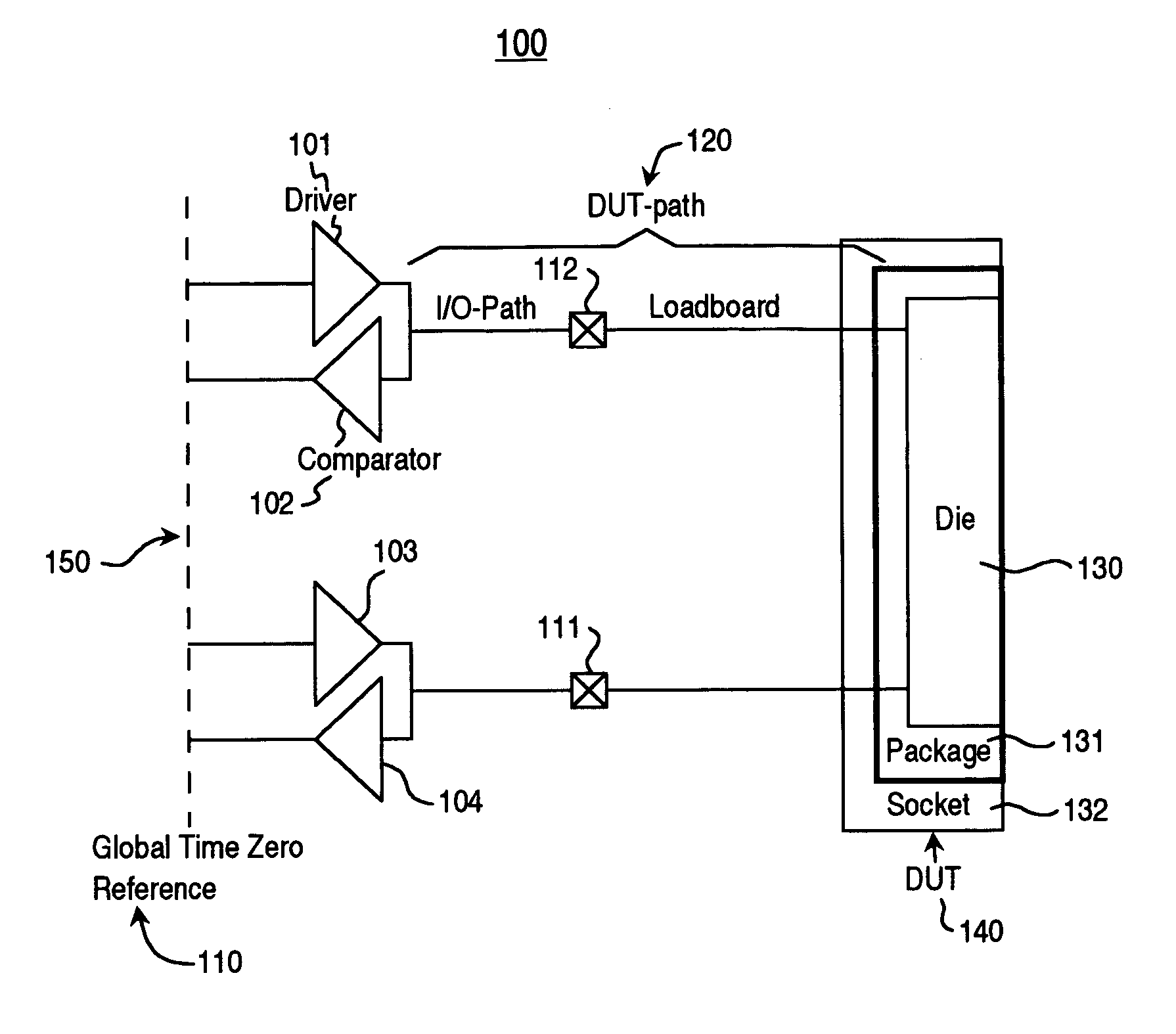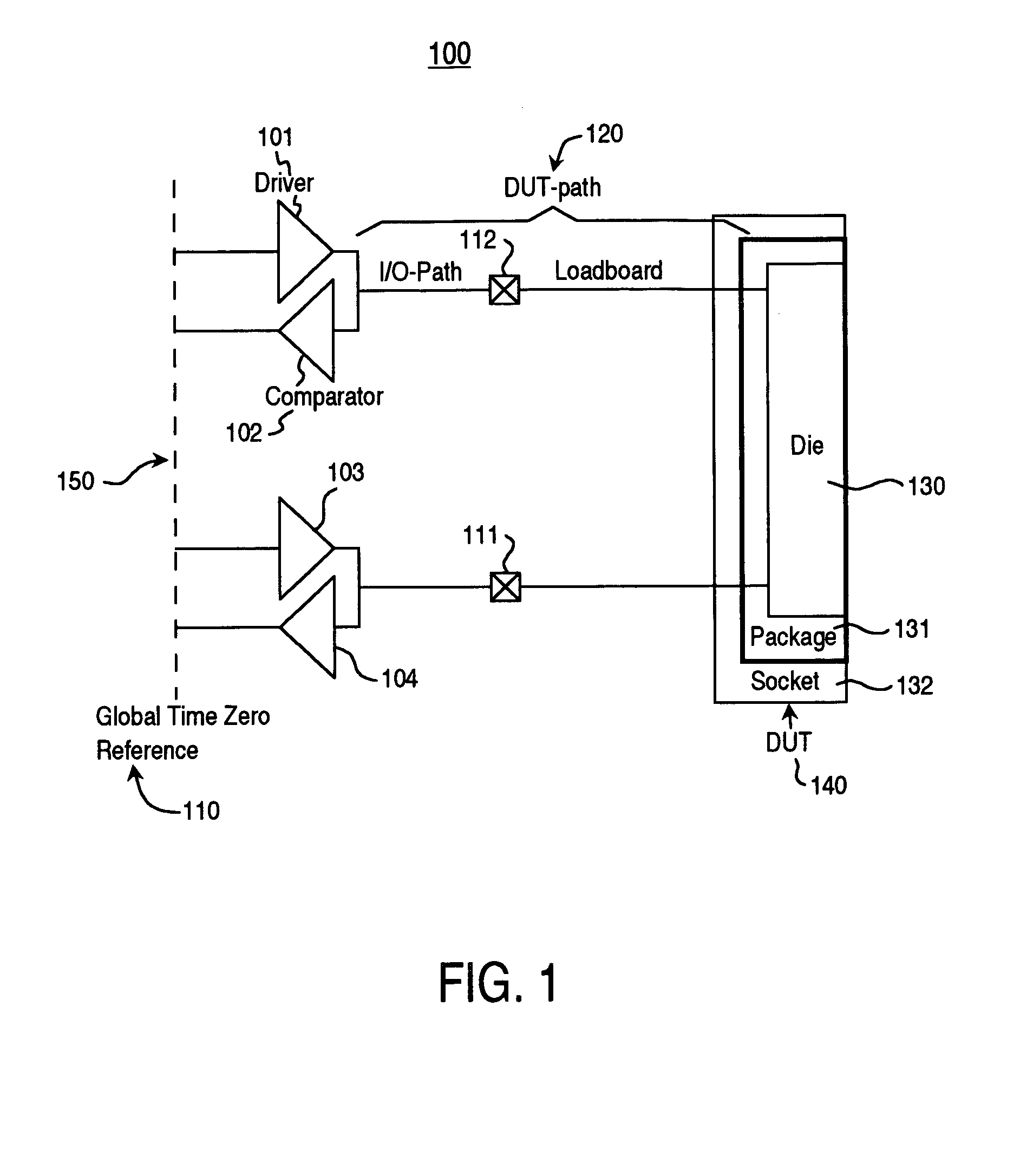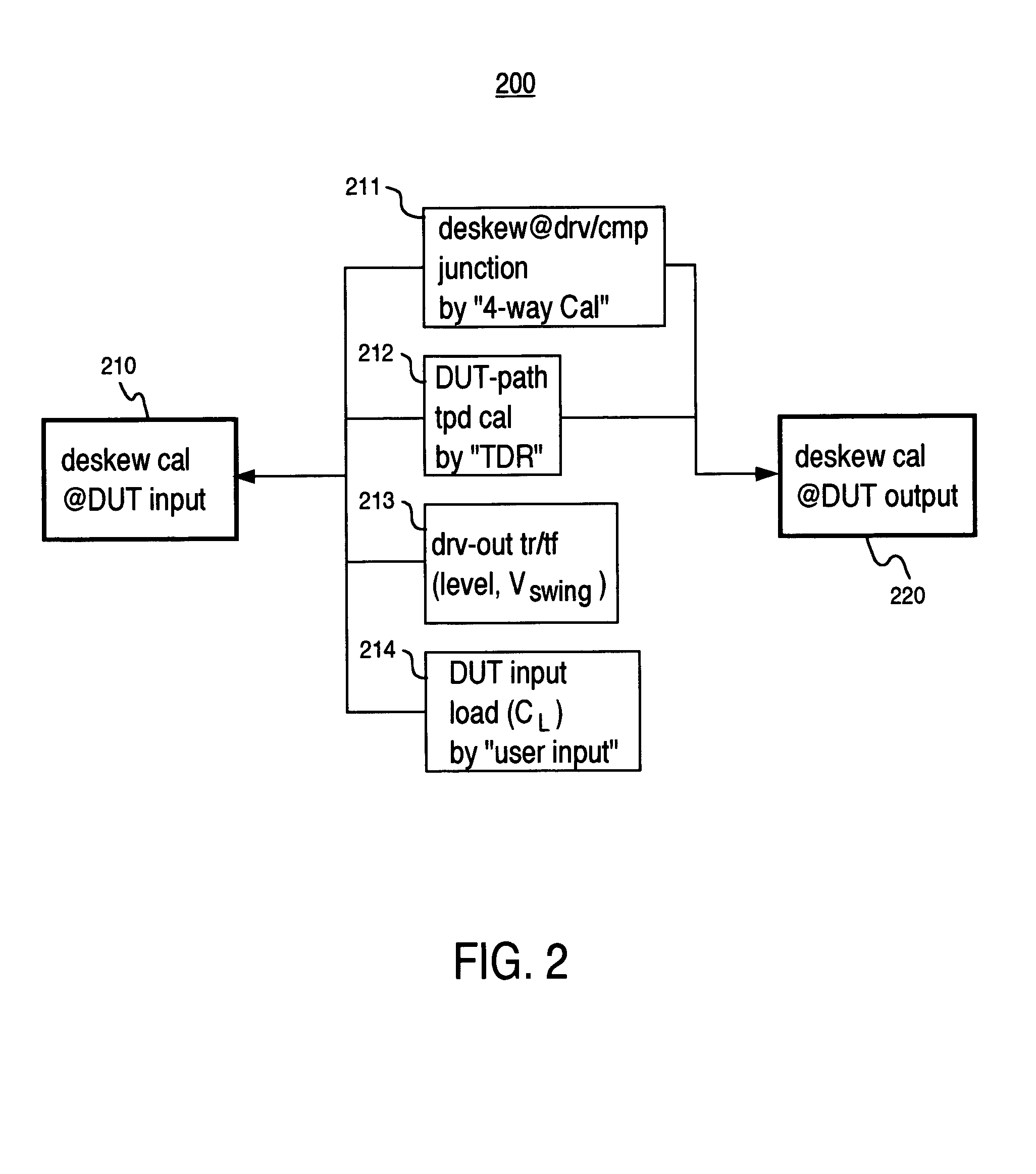Method and system for improved ATE timing calibration at a device under test
a technology of digital integrated circuits and calibration methods, applied in the field of high-performance digital integrated circuit systems, can solve the problems of prior art calibration methods, which require calibration measurements at low speed, and the assumption of error mechanisms for a conventional device-under-test (dut) is increasingly inaccurate, and achieves accurate and reliable testing of modern high-speed integrated circuit devices. high performance, accurate timing propagation delay calibration
- Summary
- Abstract
- Description
- Claims
- Application Information
AI Technical Summary
Benefits of technology
Problems solved by technology
Method used
Image
Examples
example simulation
Results with K28.5 Bit Pattern:
[0063]Simulation results are now described to illustrate the manner in which DDC in accordance with embodiments of the present invention function. In one example, a simulated circuit consists of three stages of packaged high speed buffers using bipolar transistor technology with lossy interconnects between them. Since a well-known “K28.5” pattern is often used for DDJ evaluation of telecom / datacom physical layer components and it contains a variety of bit patterns in only 20 bits duration, this pattern is the basis of the following discussions.
[0064]FIG. 14 shows a graph 1400 illustrating input and output waveforms associated with a K28.5 pattern. Graph 1400 shows the input and output waveforms where 1 UI is 300 ps. The input waveform is the square waveform indicated by line 1401. The output waveforms is indicated by line 1402.
[0065]FIG. 15 shows an “eye diagram” of the output waveform 1402. Lines 1501 and 1502 show the existence of about 35 ps DDJ. It...
PUM
 Login to View More
Login to View More Abstract
Description
Claims
Application Information
 Login to View More
Login to View More - R&D
- Intellectual Property
- Life Sciences
- Materials
- Tech Scout
- Unparalleled Data Quality
- Higher Quality Content
- 60% Fewer Hallucinations
Browse by: Latest US Patents, China's latest patents, Technical Efficacy Thesaurus, Application Domain, Technology Topic, Popular Technical Reports.
© 2025 PatSnap. All rights reserved.Legal|Privacy policy|Modern Slavery Act Transparency Statement|Sitemap|About US| Contact US: help@patsnap.com



